DE ZAKLIKA is the only painter in the world who paints portraits of websites.
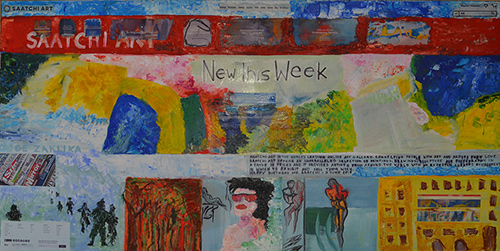
to stop something that is fleeting
raise the prestige of your company
be exclusive
be timeless
to be elitist
„Life is too important to be taken seriously”.
Oscar Wilde
‘De Zaklika’ the Portrait Atelier is a classical easel painting with mainly used an alla prima method in the special combination of individual and authorial glaze techniques.
Such a kind of creative workshop fusion makes an image look subtle and is combined of amazing depth of colors. Hence, it happens sometimes that new layers of paint covering provide an immaterial mixture of colors which are visible in the painting craftsmanship. There is no doubt that it constitutes an impressive inspiration for a single staining manner of white primer linen in shades of purple, with white and bronze used to contour image for form filling. A whole color palette is significantly enriched in color, but in majority there are shades of red. That is a demonstrative reference to painting in VIII century AD that was characteristic for Byzantine- Coptic masters working in Al Sacco technique in Pachoras, near present Wadi Halfa. This is the reason for the fact that up today, De Zaklika uses a lime milk as a binder, as well as casein, glue, oil, wax and resin. The painter uses casein or modern silicate watercolors. He prepares grinded temper emulsifiers made of hens’ egg yolk on his own. It enables him an enormous freedom in choosing a proportion of fat and water phases, and in fact, as the natural emulsion, itself it is a complete medium. Paintings made of egg tempera are especially resistant to time passing by due to a unique ability of yolk components to create long- lasting and waterproof seams. A disadvantage of that material is a short aptitude date it has to be used. In fact, just after few days dating from a preparation it is no longer fit for use. The most spectacular example of the use of egg tempera painting is a traditional painting technique, called icons’ writing.
In past, among other techniques, it was used by many artists of different eras. Namely speaking by: Andrei Rublev (1360-1430), Sandro Botticelli (1445-1510), and Lorenz Froelich (1820-1908).
According to De Zaklika, a primary role of art, religion and philosophy has always been and still is a strive to invoke an unsolvable completion feeling between a result and creative emission.
Ipso facto, this approach to painting affects the images to present an awareness of separateness and disaccord to the rest of the world. Then there is being compiled an individual heritage of mysterious connection, that is a process of creation between an image and its recipient. According to De Zaklika, a metaphysical feeling combined with an innate sense of aestheticism humanity, gives a value to human life and thereby is one of the most important sophistications that a person can experience during his earth journey.
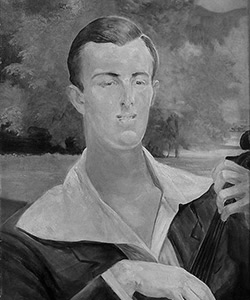
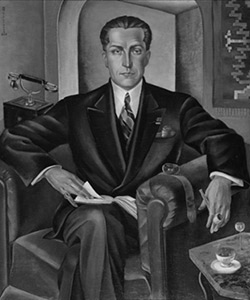
De Zaklika believes that during days before the post-industrial, the art used to influence a man much easier and more directly, whereas at present man has begun to lose the ability to experience deeper feelings. An automation and dynamical acceleration of life speed, popular mass culture and a common information flow contribute to that phenomenon. In De Zaklika’s point of view, there is noticeable a pessimistic vision of art, religion and philosophy. He believes that soon the above mentioned elements will completely disappear because of lack of any higher feelings in humans.
In that situation, according to De Zaklika, the artistic activities, and especially painting should be changed, renamed and moved away from elite modes and contemporary manners and standards in order to reach a wider audience since nowadays there is more and more frequent that the artists are the only receivers of art.

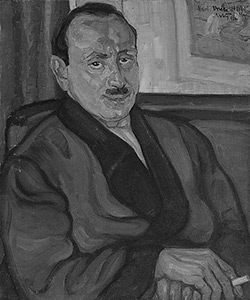
According to De Zaklika, a return to the ‘old masters’ techniques and the centuries-old tradition of painting in an adjustment to our times and even anthropological approach to the customer, can affect a receiver. Such an approach can confront the art receiver with the unknown and let him to experience deeper feelings. That approach to painting can be a means of experience by a recipient’s a ‘Mystery of Existence’.
The aforementioned theoretical description is illustrated the best in an abstractive manner but also in a metaphorical manner by a composition by FOBONACCI titled: ‘An own composition’, whereof all lines used are parallel.
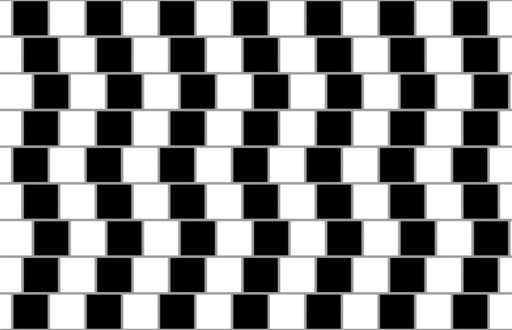
Oskar Miller (born in 1961)- a poet, painter, prose writer, organizer of exhibitions and happenings of artistic and political dimension.
The author of anticommunist posters, graffiti and murals.
He made his debut in 1981 with a poetry volume ‘Topaz’ (‘KORONA’ publishing house) and individual paintings exhibition ‘Garage Expression’.
He worked as an anti-communist opposition activist. From the early age he was associated with an independence movement in Poland; because of that he was persecuted by a communist regime. Since 1989, during the democratic transformation in Poland he was actively involved in efforts to a benefit of free parliamentary elections and furtherly with democratic state structures and units construction.
Within 1988- 1994 he was associated with an Artistic Group Association ‘Świat’. His artistic output was presented at his authorial and group exhibitions. In 1989 there were published his poems and graphics ‘Fobie’ (ŚWIAT publishing house). In 1992 there was published his first novel ‘Szablon’(ŚWIAT publishing house).
As an animator of artistic activities he was the founder and organizer of a GNINNEPPAH concept of artistic activities directed for Warsawian students- ‘The May Integration’ and cyclical exhibitions of artistic output, conceptual installations and sculptures ‘Koniec Wieku’
During the Balkan Conflict (1992- 1995) he organized humanitarian aid for Croatia and Bosnia.
He completed his painting "artistic path" on 18th of February 1994 with an exhibition of his paintings titled: ‘I came out of a garage’. Since that moment on he has been accomplishing video clips, has been writing and implementing TV program’s formats and documentary films’ scenarios.
He is the author of the following novels: ‘ Szablon’- ŚWIAT publishing house, 1992), ‘Postmoderniści’- MAG publishing house, 2006), ‘Skrzydła Serafinów’- KLUCZE publishing house, 2008), ‘Cienie powracają o zmroku’ (KLUCZE
Drama author: ‘Paprika Korps’ (KLUCZE publishing house, 2010).
In his artistic (painting) work he is associated with a New Expressure (‘Nowi Dzicy’), while his poetry and prose is being classified with a Realistic Postmodernism mainstream.
He comprises his artistic output in France and Poland.
| Name: E-mail: |
Message: |

